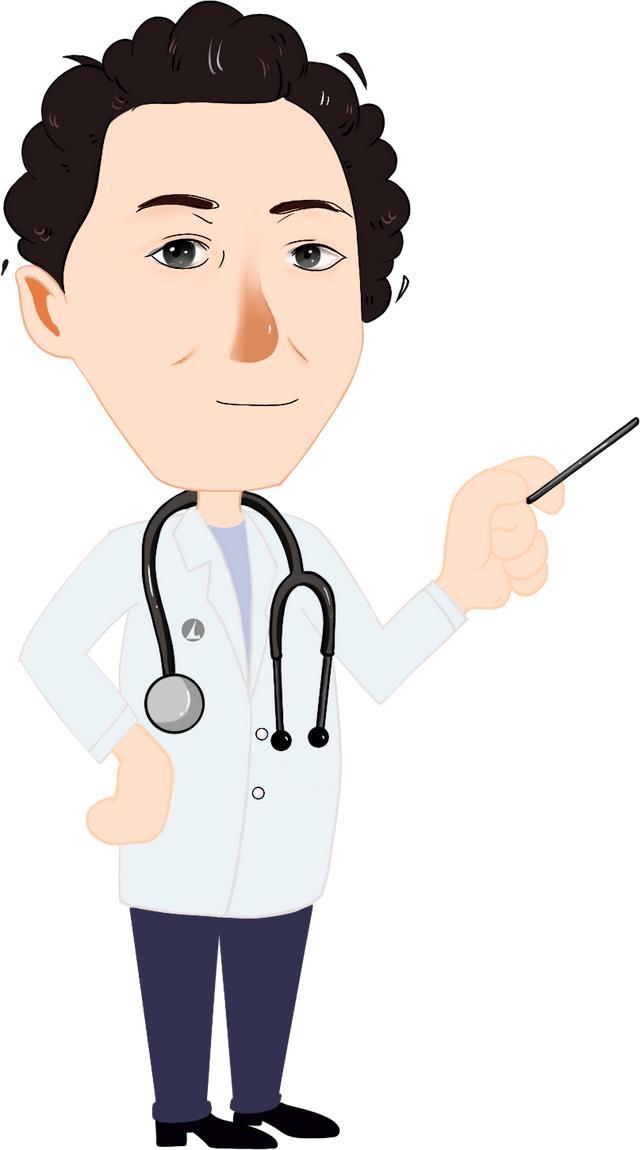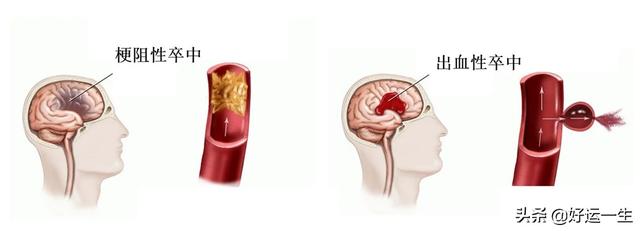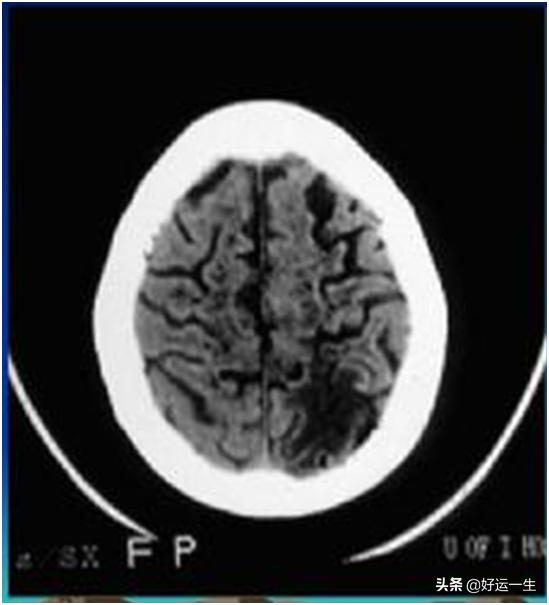How do you understand a brain attack? What are the symptoms?
A brain attack is actually particularly well understood: a blockage of a blood vessel in the head!
If the human body as a world, then the blood vessels throughout the body is a large and small traffic roads, and blood is a truck, the energy oxygen delivery to various locations, to facilitate their consumption of normal work, the greater the workload consumption is also the more, the normal person to deliver the blood and oxygen energy tend to be more than adequate, not only to meet the basic consumption, there is a certain amount of reserves.
Cerebral infarction patients are different, cerebral infarction patients have blocked blood vessels, you can imagine that road construction or car accidents, blood can not be as fast as before through the adequate, which means that the reduction of blood, oxygen and energy supply, energy is the basic guarantee for all behavioral activities, once the supply is reduced, it will make the brain areas of the tissues of the blood and oxygen perfusion is increasingly less, this consumption is greater than the supply of the pattern of long-term This pattern of consumption over supply for a long period of time will make the cells and tissues gradually necrotic, which is the pathogenesis of cerebral infarction.

What are the symptoms of a brain attack?
1, fuzzy language: unclear language expression, stuttering, big tongue, some patients will also drool.
2, vision loss: suddenly feel the vision is not clear, or the field of vision becomes smaller, after a period of time and will be restored naturally.
3, drowsiness and fatigue: frequent yawning, always feel physically tired, even if a long time to rest still so, want to sleep.
4, dizziness and headache: in the absence of triggers, suddenly feel the sky turning, or even fall down directly, some patients will also be complicated by headache symptoms.
5, physical disorders: abnormal upper and lower limb activities, there is always a slow response or a sense of loss of control, such as the inability to hold things normally, unable to walk normally.

I hope my answer will help you!
If there's anything you don't understand, comment and private message me!
In layman's terms, it's a clogged water main.
The pathogenesis of cerebral infarction is a class of ischemic diseases in which one of the blood vessels supplying blood to the brain tissue is completely blocked, causing necrosis of the brain tissue. Cerebral infarction is categorized by five etiological factors, which are common in the world:
First, of atherosclerotic origin, cerebral infarction caused by atherosclerosis of large arteries;
Second, cardiac origin, such as severe arrhythmia, valvular heart disease and other heart problems;
Third, lesions of small arteries, such as vasculitis and other lesions;
Fourth, ischemic cerebrovascular disease caused by systemic diseases;
Fifth, unexplained cerebral infarction, and probably accounted for the total number of patients with cerebral infarction of a considerable portion of patients, can not use the currently known means of examination and etiology to categorize the disease of cerebral infarction is how to cause, and now this field is very much involved in the content to be studied.
In conclusion, if a patient with a cerebral infarction comes in the first thing to do is to evaluate the blood vessels and to look at the risk factors, and to perform cardiac investigations when necessary.
Fever in patients with cerebral infarction may aggravate the symptoms of cerebral infarction, thus prolonging the treatment time and affecting the recovery. The clinical symptoms of cerebral infarction are more complicated, which are related to the location of brain damage, the size of cerebral ischemic blood vessels, the severity of ischemia, and the presence or absence of combination of other important organ diseases, etc. In mild cases, there may be no symptoms at all. In mild cases, there may be no symptoms at all, i.e. asymptomatic cerebral infarction, or headache, dizziness, nausea, vomiting, aphasia, paralysis of limbs, etc.; in severe cases, not only paralysis of limbs, but also acute coma or death; if the lesion affects the cerebral cortex, it may be combined with epileptic seizure in the acute stage.
Early symptoms of cerebral infarction
1. Blurred vision
Early symptoms of cerebral infarction are transient visual disturbances or visual field defects, which usually recover within one hour. The expert's opinion on the transient vision
Funduscopic examination and cerebral blood flow measurements were performed in 10 patients with retinal disorders, and occlusion of the central retinal artery was found in one case, which was a retinal division of the retina.
Branchial artery occlusion.
2、Paraplegia on one side
Transient ischemic attack (TIA) is, strictly speaking, the lightest type of stroke. According to the follow-up observation, after the transient ischemic attack to the year.
Ischemic stroke occurs in about half of the population and is an early symptom of cerebral infarction.
3. Yawn after yawn
Early symptoms of cerebral infarction when cerebral arteriosclerosis gradually aggravates, the lumen becomes narrower and narrower, cerebral ischemia and hypoxia aggravate, especially hypoxia of the respiratory center.
The yawning reflex can be triggered when a person has an ischemic stroke. Frequent yawning is an important alarm signal for about 80% of people who yawn frequently, mostly within 5 to 10 days before the onset of an ischemic stroke.
4. Stuttering
The symptoms of Christmas are poor speech and drooling, which is an early symptom of cerebral infarction, and may come on suddenly.
5. Transient blackout
Sudden onset of blackout, blindness, recovery in seconds or minutes, accompanied by nausea, vomiting, headache and impaired consciousness.
Early symptoms of cerebral infarction.
The above symptoms are the early symptoms of cerebral infarction, patients and friends must pay attention to, once the above symptoms appear in life.
Don't be careless, go to the neurosurgery department of the relevant specialized hospital for diagnosis and treatment in order to effectively alleviate the condition.
Cerebral infarction is a common cerebrovascular disease.
Cerebral infarctions can occur at any age, but most occur over the age of 40, with a peak between the ages of 50 and 70.
Cerebral infarction is a class of clinical syndromes in which the blood supply to the brain is impaired, leading to cerebral ischemia and hypoxia, causing local necrosis of brain tissues, resulting in cerebral dysfunction, and consequently, abnormalities of corresponding neurological functions.
Typical symptoms of cerebral infarction: hemiparesis, aphasia, hemiplegia, double gaze to one side, blurred vision, diplopia, hemianopsia, vertigo, vomiting, headache, impaired consciousness, convulsions.
Cerebral infarction can cause cerebral edema, increased intracranial pressure, post-infarction hemorrhage, epilepsy, and often complications such as pressure sores, lung infections, upper gastrointestinal bleeding, lower extremity venous thrombosis, pulmonary embolism, dysphagia, and cardiac injury. When the condition worsens, it can be life-threatening.
The main treatments for cerebral infarction include: general treatment, specific treatment, acute phase comorbidities, rehabilitation, and primary treatment.
The prognosis of cerebral infarction is related to a number of factors such as age, the presence of underlying diseases, and the presence of comorbidities. Most people have a good prognosis, but the disease has a high recurrence rate, and the higher the number of recurrences, the higher the rate of death and disability.
Stroke, also known as cerebrovascular accident, is an acute cerebrovascular disease, due to the sudden rupture of blood vessels in the brain, or due to the obstruction of blood vessels, blood can not flow into the brain, thus leading to brain tissue damage in a group of diseases, not a disease.
Strokes are divided into ischemic strokes and hemorrhagic strokes. Ischemic stroke, also known as cerebral infarction and cerebral embolism, accounts for 80% of the probability of developing the disease.
The cells of our body need blood to provide energy and nutrients if they are to live and function. Brain cells, likewise, need blood for energy and nutrition.
If the blood vessels supplying this part of the brain are broken or blocked, it will result in the death of the brain cells in this part of the brain. When brain cells die, function is lost and symptoms such as: inability to speak, crooked mouth, drooling, paralysis, and so on.
The brain, as the most advanced part of the nervous system, is the commanding officer of our body, just like the CPU of a computer. Localized brain tissue in the brain can also lead to corresponding limb and consciousness disorders after injury. Different areas of the brain are responsible for different functions. When different functional areas are damaged, the corresponding body functions are lost.
The same stroke manifests symptoms differently because the location and size of the lesions in their brains are different: some infarcts are large, some are small, some brain hemorrhages bleed a lot, and some bleed just a little bit.
Symptoms may all be paralysis or inability to move a limb.
Hemorrhagic stroke is also called cerebral hemorrhage and cerebral hemorrhage. The amount and location of bleeding determine the severity of stroke and are categorized as: intracranial hemorrhage, subarachnoid hemorrhage. The probability of occurrence accounts for 20% of strokes, but the mortality rate is much higher than that of ischemic stroke.
Cerebral infarction: Problems with the arteries that supply blood to the brain can lead to narrowing or even occlusion of the lumen of the blood vessel, which leads to a lack of blood supply to the brain, and ultimately to death. This is caused by the blood vessel itself.
A brain infarction is seen as a patch of black places, medically called 'hypodense shadows'. These places are the lesion sites. (Figure 2)
There is another type called cerebral embolism: a foreign substance enters a blood vessel and travels with the blood circulation into the cerebral arteries. The blood vessels get thinner and thinner in the brain, and the flow of abnormal substances can get stuck and not move, causing a blockage of blood flow and a sudden decrease in blood flow, which can lead to necrosis of the brain tissue in the area of innervation.


A quick look on the internet will make it clear. Don't be lazy.
The cells of our body need blood to provide energy and nutrients if they are to live and function. Brain cells, likewise, need blood for energy and nutrition.
This question and answer are from the site users, does not represent the position of the site, such as infringement, please contact the administrator to delete.